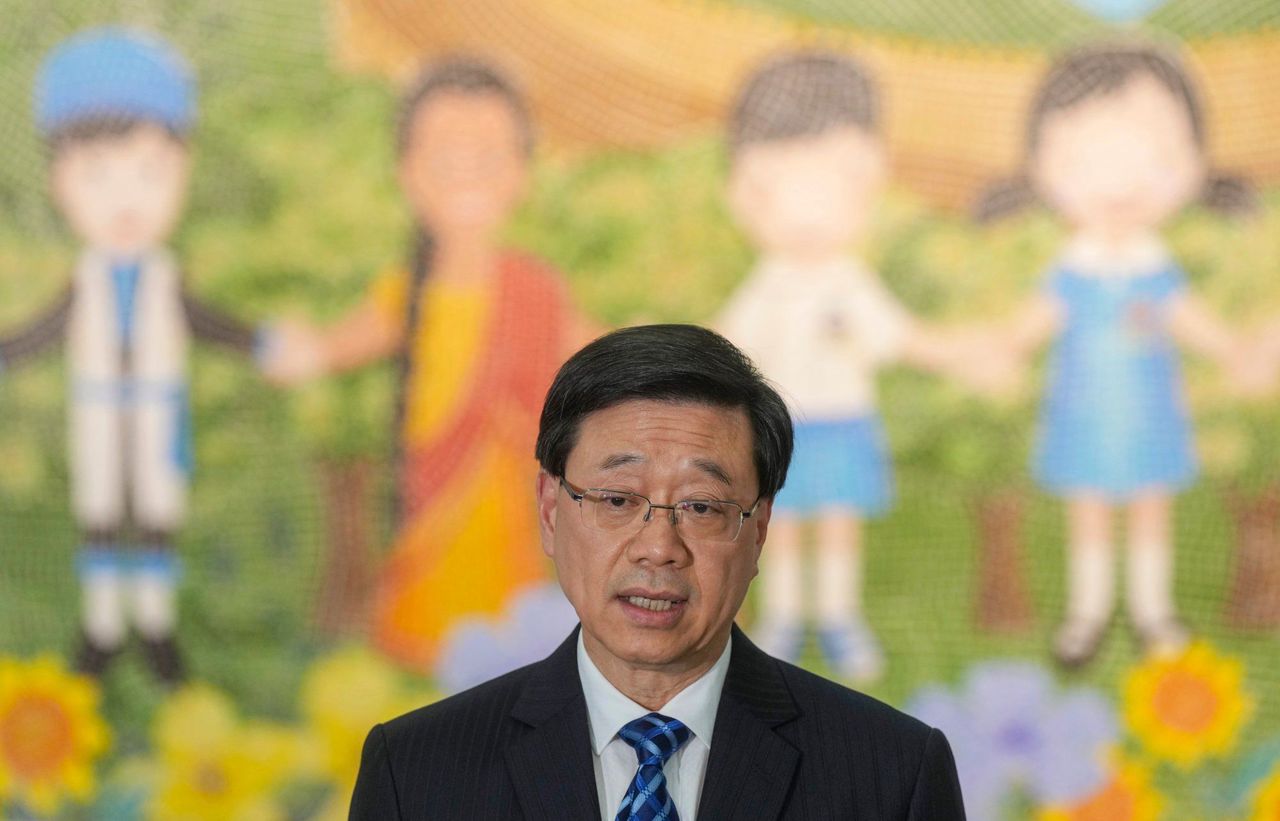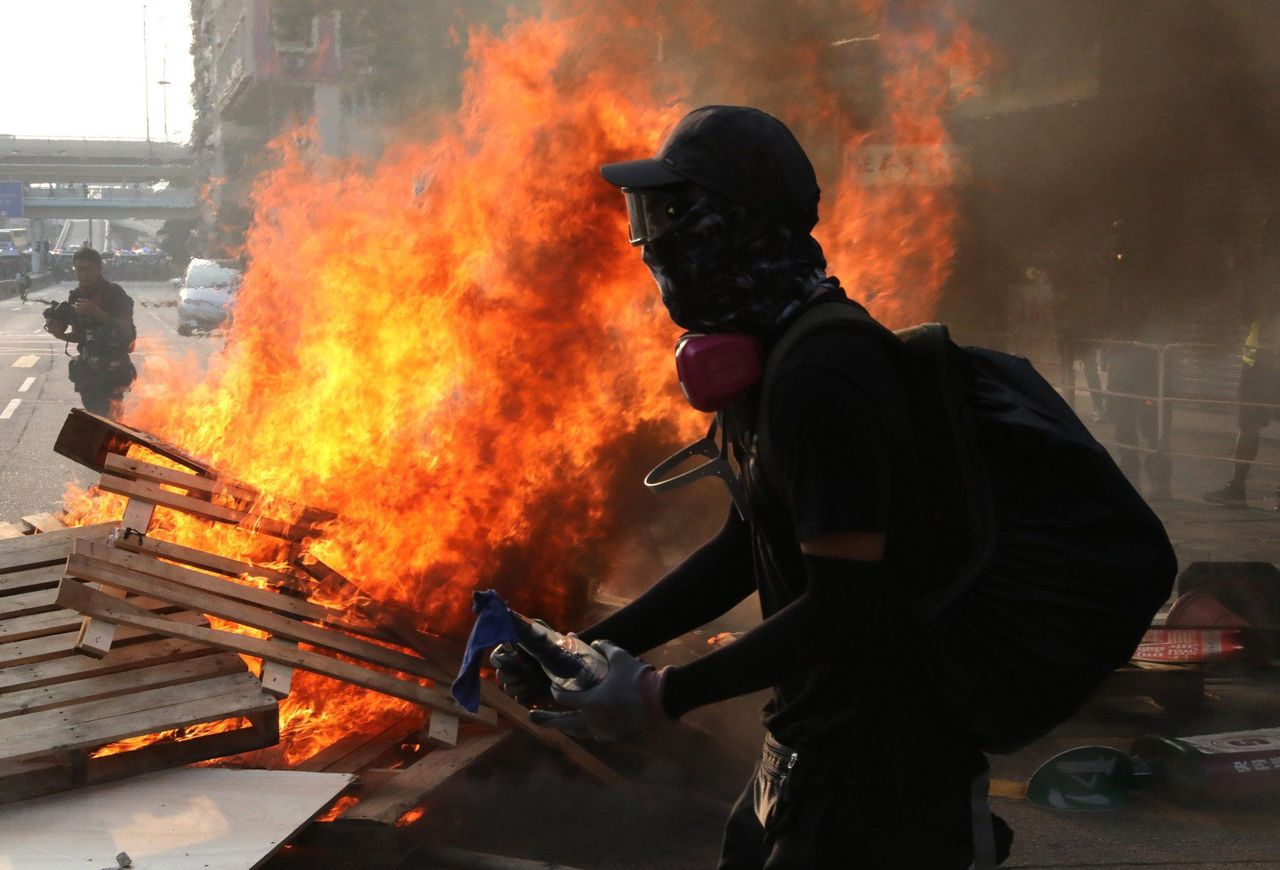Hong Kong News

Hong Kong leader urges national security vigilance as top Beijing official ends trip
Hongkongers should remain vigilant over national security threats and never forget lessons about the destructive power of the “colour revolution” that emerged in 2019, the city’s leader has said, as he offered his key takeaways from a fact-finding visit by a senior Beijing official.
Chief Executive John Lee Ka-chiu offered the summary on Tuesday at the end of the six-day trip by Xia Baolong, director of the State Council’s Hong Kong and Macau Affairs. Xia, who earlier told residents that protests were not the only way to express opinions, did not respond to media questions throughout the day.
“We should have this alarm bell ringing all the time,” Lee said at a primary school after the director departed for Beijing. “The superficial calm does not mean that these forces and risks that could cause destruction or pose serious threats to society do not exist.”
 City leader John Lee speaks at the Ma Tau Chung Government Primary School.
City leader John Lee speaks at the Ma Tau Chung Government Primary School.
Lee said Xia had offered a reminder to residents that they should always remember the violence brought by the “colour revolution”, using a term that officials have adopted to describe the anti-government protests that erupted four years ago. While the demonstrations were triggered by a proposed extradition law, the movement morphed into a wider call for greater progress towards universal suffrage, but the demonstrations also brought some of the worst violence the city has seen outside wartime.
Beijing maintains the social unrest showed characteristics of colour revolutions, the term given to popular resistance movements in former Soviet bloc countries in the early 2000s and later in the Middle East.
Lee called on residents to protect hard-earned social stability and pledged that the city’s executive, legislative and judicial branches would do their utmost to safeguard national security.
“We must not become slack in the face of hostile and destructive forces, which must be cracked down on forcefully,” he said.
In his speech on National Security Education Day on Saturday, Xia told residents that demonstrations “are not the only way to express one’s interests and demands”. He warned that certain demands were susceptible to “hijacking” and a confrontational society “has no future”.
 Protesters burn objects on a road during the 2019 anti-government movement.
Protesters burn objects on a road during the 2019 anti-government movement.
Protests, once commonplace in Hong Kong, disappeared when the Covid-19 pandemic erupted at the beginning of 2020, and only returned late last month, when about 100 residents rallied against a proposed reclamation project.
On Monday, the Federation of Hong Kong and Kowloon Labour Unions, a pro-Beijing group, formally withdrew an application to hold a rally later this month to mark Labour Day on May 1.
Lee on Tuesday said rally organisers had a responsibility to consider the risks the event might pose to public order and noted residents could always make their opinions known in other ways, such as emailing lawmakers or government officials.
Earlier in the day, Xia visited the University of Hong Kong (HKU), where, according to sources, he spent time at an art exhibition at the main library before proceeding to the engineering faculty’s innovation wing that showcases the varsity’s technological achievements,
Screens in both buildings carried welcome messages in simplified Chinese, used in mainland China.
Following a 20-minute campus tour, Xia had lunch with HKU vice-chancellor and president Xiang Zhang. He presented the university’s development plan, which includes the construction of the Tech Landmark buildings for interdisciplinary studies in artificial intelligence and big data.
Before his arrival, about 20 plain-clothes police officers were seen around the library and on the footbridge linking MTR exits with the innovation wing.
A so-called democracy wall located outside the main library that usually carries political banners and messages had been stripped clean. Journalists were also kept at a distance throughout his campus tour.
For much of the past decade, students at HKU regularly made headlines for their political activism. In 2015, then chief executive Leung Chun-ying claimed the student union’s official magazine, Undergrad, was “advocating independence” and “putting forward fallacies”.
In November 2019, dozens of students converged on Zhang’s office and home, demanding he condemn police for their handling of the social unrest. On November 11 that year, police entered HKU and two other universities, where protesters had set up bases of operation. Only after intense volleys on both sides were officers able to wrest back control of the campuses.
Xia also made a brief visit to the Chinese Foundation Secondary School in Siu Sai Wan, accompanied by Secretary for Education Christine Choi Yuk-lin, supervisor Annie Wu suk-ching and management committee member Peggy Lam Pei Yu-dja.
According to a source, the director met students who shared their experiences of learning Chinese history and citizenship and social development, the name for a mandatory social studies course that was overhauled in 2021 amid claims it was fostering radicalism.
Xia then travelled to the Ma Tau Chung Government Primary School (Hung Hom Bay), where he met pupils and teachers
City leader Lee said Xia was briefed at both schools about the progress of implementing national security education.
“Both schools attached great importance to national security education. I, as the one who accompanied Xia on the visits, felt encouraged,” said Lee.
Lau Siu-kai, a consultant at the semi-official Beijing think tank the Chinese Association of Hong Kong and Macau Studies, said Xia had asked Hongkongers to remain highly vigilant against national security threats because internal and external hostile forces would continue to stir up trouble.
But he believed that the director’s main message to residents during his visit was that the city should sharpen its competitive edge and accelerate integration into the nation’s development plan.











